Welcoming plants into your home can transform your space into a vibrant oasis, a sanctuary for both you and your furry companions. As plant enthusiasts, we understand the joy of nurturing greenery, but keeping our beloved pets safe is a top priority. Whether you’re just beginning your gardening journey or you’ve been tending to plants for years, the thrill of finding pet-safe options can be incredibly rewarding. This article will guide you through eight delightful plant choices that bring beauty to your home without posing a risk to your pets.
In this guide, you’ll discover a collection of plants that are as safe as they are stunning, ensuring peace of mind when your curious cat or playful pup explores. From lush ferns to vibrant succulents, these selections are perfect for creating a harmonious environment where plants and pets thrive together. We’ll provide practical tips on how to care for each plant, making it easy for everyone—from green-thumbed aficionados to novices dipping their toes into gardening—to keep their leafy friends flourishing. Prepare to be inspired as we delve into the world of pet-safe plants, sharing insights that will enrich your gardening experience and home life alike.
Introduction to Pet-Safe Plants

When choosing plants for your home, it’s essential to consider the safety of your pets. Pet-safe plants provide the beauty of greenery without posing a risk to animals that may chew or touch them.
Start by selecting plants that are non-toxic to both cats and dogs, as these are the most common household pets. The ASPCA offers a detailed list of safe plants, but some popular choices include spider plants and Boston ferns.
For those new to gardening, spider plants are a fantastic start due to their hardiness and tolerance for various lighting conditions. These plants thrive in indirect light and prefer to dry out between waterings, making them low-maintenance and pet-friendly.
Experienced gardeners might enjoy growing a Boston fern, which requires a bit more attention. Ensure it has consistent humidity and well-draining, rich soil to keep it lush and thriving.
- Spider Plant Care: Place in a spot with indirect light, water when the top inch of soil is dry.
- Boston Fern Care: Maintain high humidity, keep soil consistently moist but not soggy.
Spider Plant: A Green Companion
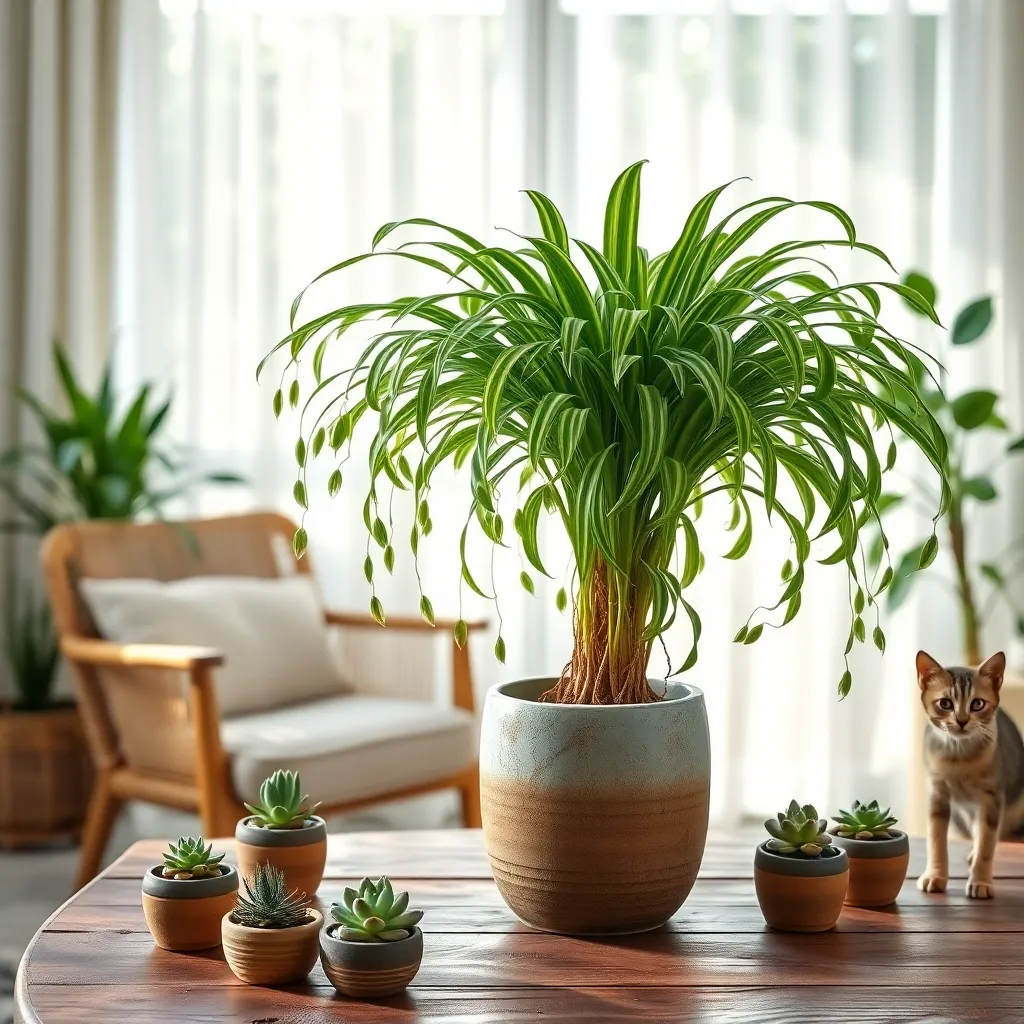
Spider plants are a fantastic choice for pet owners looking to bring some green into their homes. These resilient plants are not only easy to care for but are also non-toxic to cats and dogs, making them an ideal indoor companion.
To thrive, spider plants prefer bright, indirect sunlight, although they can tolerate lower light conditions if necessary. Ensure the soil is well-draining by using a potting mix that includes perlite or sand to prevent waterlogging.
Watering is straightforward: allow the top inch of soil to dry out between waterings, which generally means watering once a week. In the growing season, you can promote lushness by using a balanced liquid fertilizer once a month.
For a healthier plant, periodically trim the brown tips that can develop due to fluoride in tap water. Consider using distilled water or rainwater to avoid tip browning and keep your spider plant looking its best.
Boston Fern: Lush and Safe
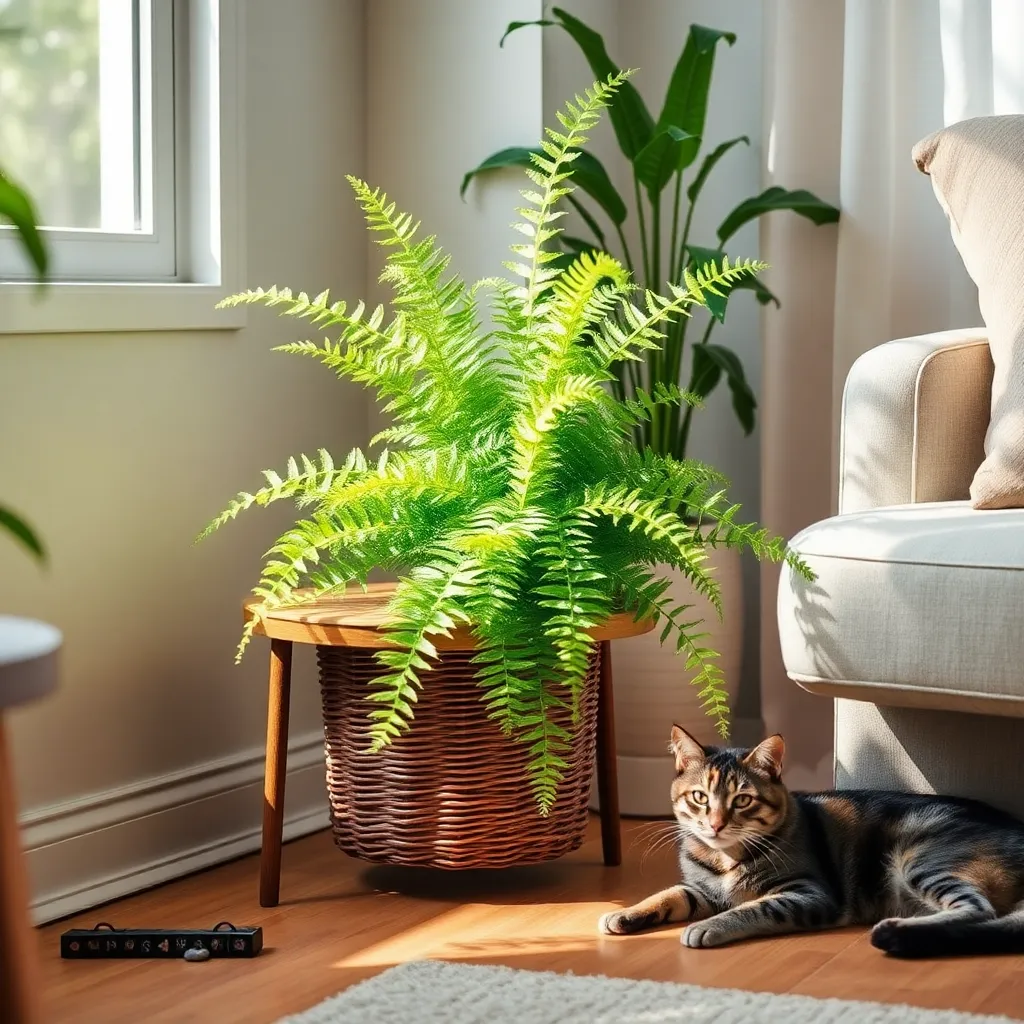
Known for their lush, feathery fronds, Boston ferns are a popular choice for adding greenery to your home. They are also pet-safe, making them perfect for households with curious cats and dogs.
Boston ferns thrive in conditions that mimic their native tropical environment. Ensure they receive indirect light and maintain a humid atmosphere around them to keep their leaves vibrant and healthy.
Watering is crucial to keeping a Boston fern happy; aim to keep the soil consistently moist but not soggy. During winter months, reduce the watering frequency slightly, as growth slows down with lower light levels.
For beginners, a standard potting mix with good drainage will suffice. More experienced gardeners might want to use a soil blend that includes peat moss to boost moisture retention without compromising drainage.
Areca Palm: Tropical and Pet-Friendly
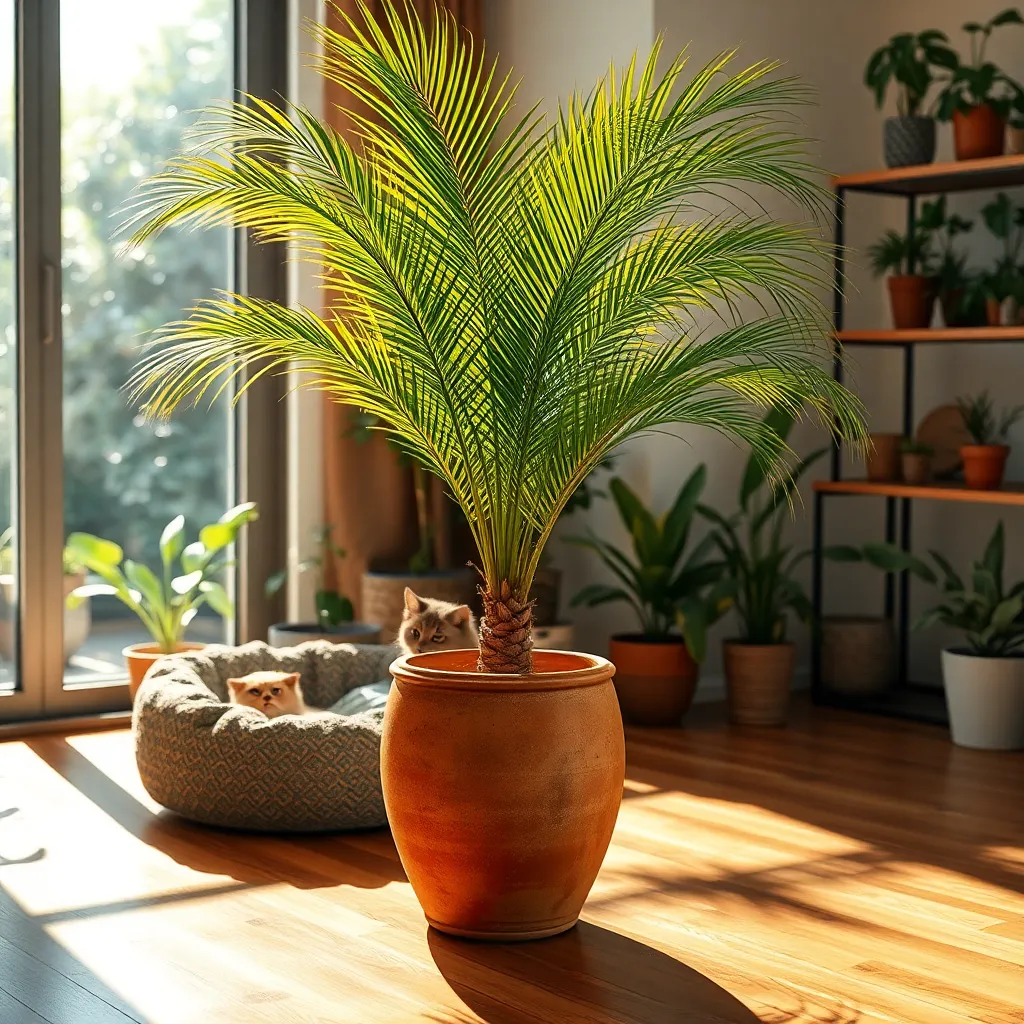
Areca Palms, also known as Dypsis lutescens, are beloved for their lush, feathery fronds that bring a touch of the tropics into your home. These palms are not only visually appealing but also safe for pets, making them a perfect choice for households with curious cats and dogs.
To thrive, Areca Palms prefer bright, indirect sunlight, which replicates the dappled light of their native tropical environments. If you notice the leaves turning yellow, it could be a sign of too much direct sunlight, so consider moving the plant to a shadier spot.
This plant enjoys well-draining soil; a mix of peat, pine bark, and perlite works best. Watering should be done when the top inch of soil feels dry to the touch, ensuring the roots are kept moist but not waterlogged.
More experienced gardeners might consider misting the leaves regularly to increase humidity, mimicking their tropical origins. Fertilize your Areca Palm every two months with a balanced liquid fertilizer during the growing season to keep it lush and vibrant.
Calathea: Vibrant and Non-Toxic
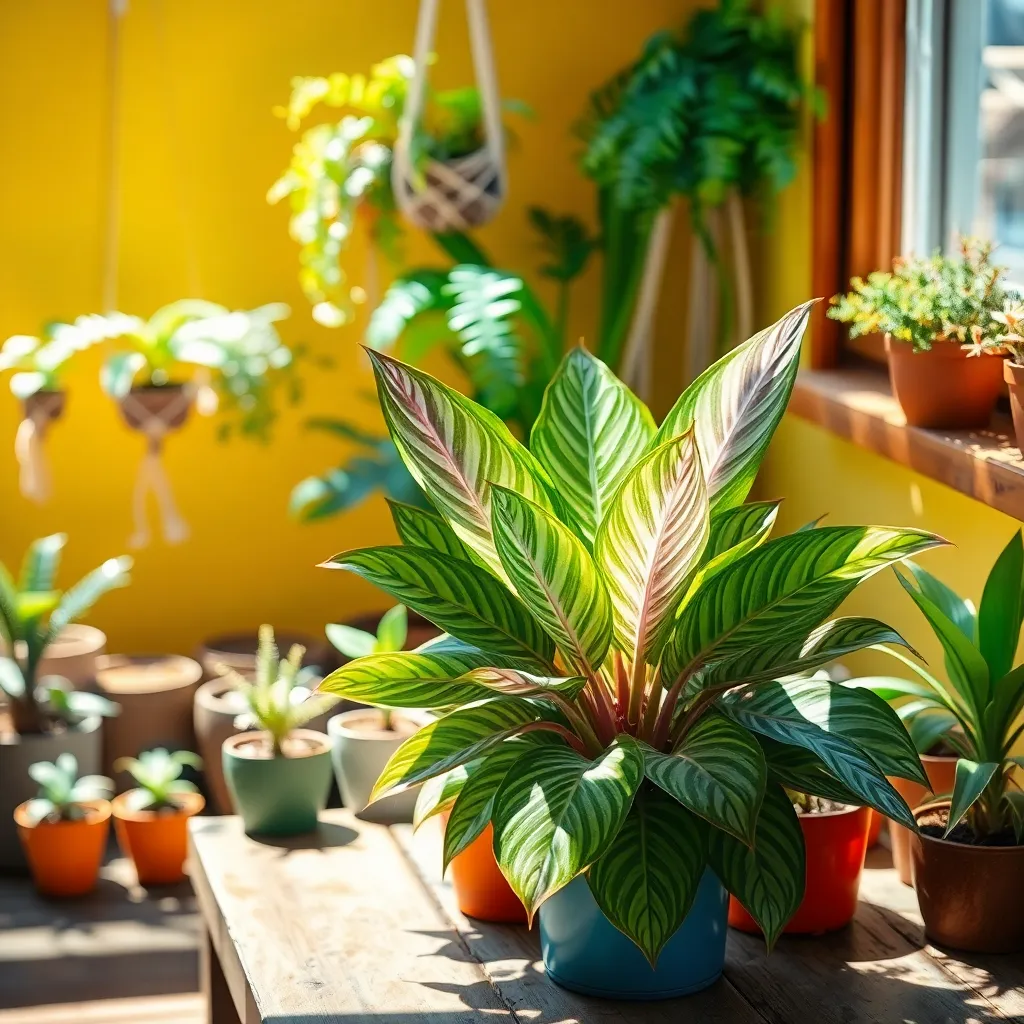
Calathea plants, known for their vibrant foliage, are a stunning addition to any pet-friendly home. Their non-toxic nature makes them safe for your furry friends, providing both beauty and peace of mind.
These plants thrive in bright, indirect light, making them perfect for spots near windows that don’t receive direct sunlight. Too much direct light can cause the leaves to lose their vibrant color, so find a balance that lets them shine.
Calatheas prefer high humidity, which can be achieved by misting the leaves regularly or placing a humidifier nearby. Keeping the soil consistently moist is essential, but be cautious of overwatering, which can lead to root rot.
For those with more experience, consider using a potting mix that includes peat or coco coir, which retains moisture while allowing for good drainage. Fertilize your plant every month during the growing season with a balanced, water-soluble fertilizer to promote lush growth.
African Violet: Blossoms and Safety

African violets are a delightful addition to any home, known for their charming blooms and pet-safe qualities. These plants thrive indoors and prefer bright, indirect light, making them perfect for rooms with filtered sunlight.
To keep African violets healthy, it’s crucial to use the right soil. Opt for a well-draining African violet mix to prevent root rot, and ensure that the pot has drainage holes.
Watering is another critical aspect of African violet care. Use room-temperature water and apply it at the base to prevent leaf spotting, allowing the soil to dry slightly between waterings.
For those looking to encourage more blooms, consider feeding your African violets with a balanced fertilizer every 4-6 weeks. Regularly remove spent flowers to promote new growth and maintain the plant’s health.
Bamboo Palm: Elegant and Secure
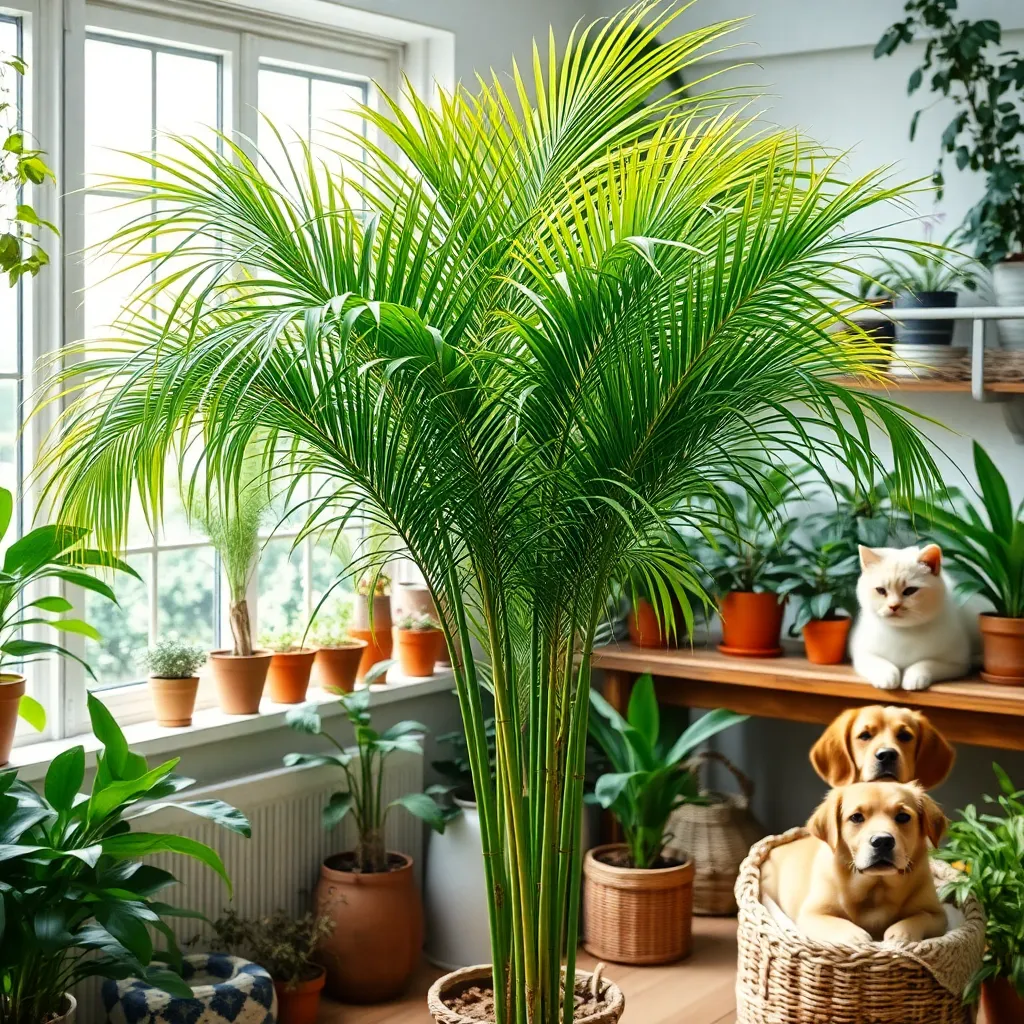
Bamboo Palm, also known as Chamaedorea seifrizii, is a graceful plant that adds a touch of elegance to any home setting. This pet-safe plant thrives indoors and can easily adapt to various lighting conditions, making it perfect for both bright and low-light areas.
When caring for a Bamboo Palm, ensure it is planted in well-draining soil, such as a peat-based potting mix, to prevent root rot. Water the plant moderately, allowing the top inch of soil to dry out between waterings, as overwatering can be detrimental.
To maintain its lush appearance, mist the leaves regularly to increase humidity, especially during dry winter months. Fertilize your Bamboo Palm once a month in spring and summer using a balanced liquid fertilizer diluted to half strength, ensuring optimal growth.
For experienced gardeners looking for a challenge, consider propagation by division during repotting. This process involves carefully separating clusters of stems and replanting them in fresh soil, allowing you to expand your indoor garden effortlessly.
Caring for Pet-Safe Plants
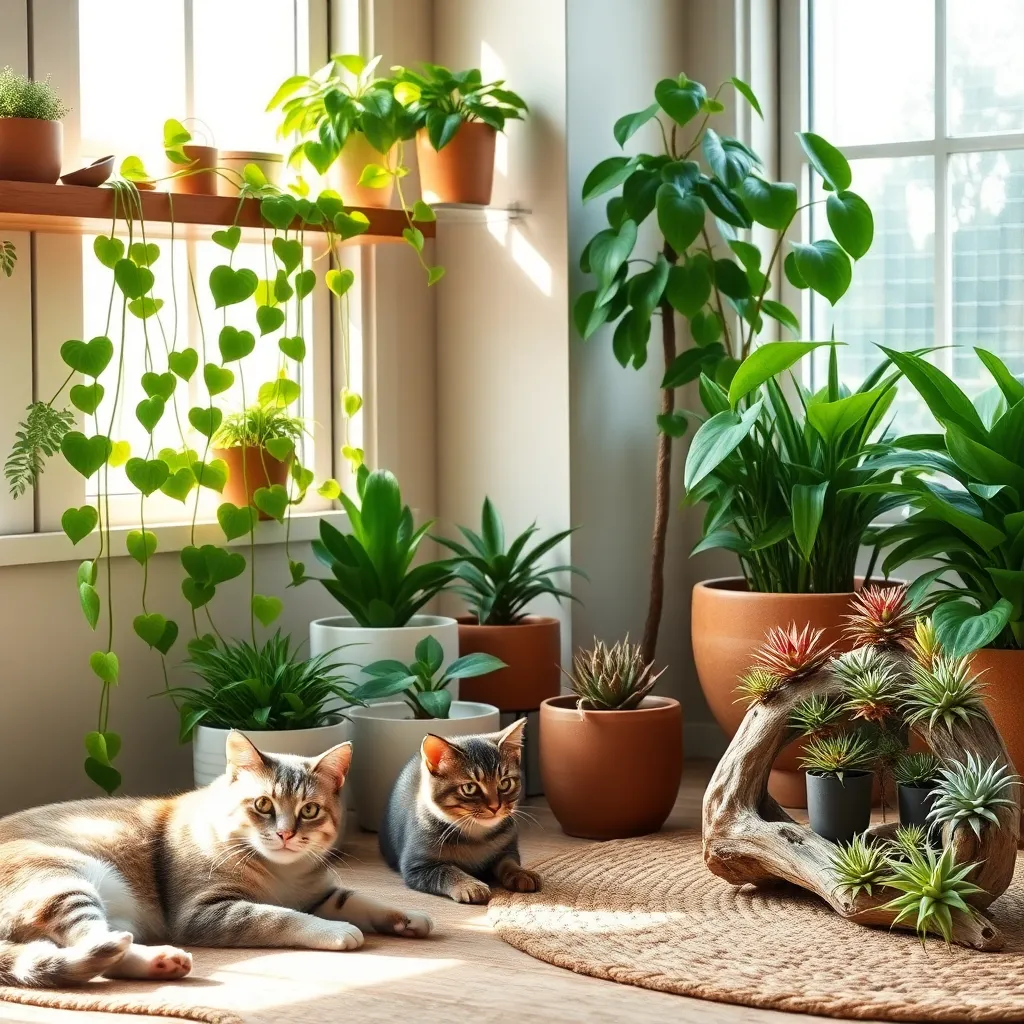
Caring for pet-safe plants requires a gentle balance of providing optimal conditions while ensuring the safety of your furry friends. Begin by selecting a spot with suitable light for the plant, such as indirect sunlight, which is beneficial for most pet-safe varieties.
Watering is crucial, so ensure you understand the specific needs of each plant. Generally, allow the top inch of soil to dry out before watering, which helps prevent overwatering and root rot.
Consider the importance of soil type, as it can significantly impact plant health. A well-draining potting mix is usually ideal, as it prevents waterlogging and promotes healthy root growth.
Feeding your plants the right nutrients is another key aspect of care. Use a balanced, water-soluble fertilizer monthly during the growing season to encourage robust growth.
For advanced care, monitor your plants for pests such as aphids or spider mites. Employ natural pest control methods, like neem oil, to keep your plants healthy without harming your pets.
Finally, regular pruning can help maintain the shape and size of your plants while promoting new growth. Use clean, sharp scissors to trim any dead or yellowing leaves, ensuring your plants remain vibrant and lush.
Conclusion: Growing Success with These Plants
In the delightful journey of greening your home with love, we explored eight pet-safe plants that can enhance both your living space and your relationship with your furry companions. From the vibrant Spider Plant to the refreshing Boston Fern, each plant offers a unique blend of beauty and safety, ensuring a harmonious environment for you and your pets. By integrating these plants, you nurture not just your home, but also the bonds within it, creating a sanctuary of trust and care.
Now, take the first step towards transforming your space: choose one plant from our list to incorporate into your home today. As you watch it grow, let it remind you of the nurturing required in all relationships.
Be sure to bookmark this article for future reference, allowing you to revisit these insights and continue to expand your plant family with confidence. Remember, every small action contributes to the flourishing of your relationships. As you cultivate your home environment, you’re also laying the foundation for lifelong relationship success. Embrace this journey with optimism and watch as both your plants and relationships thrive.







